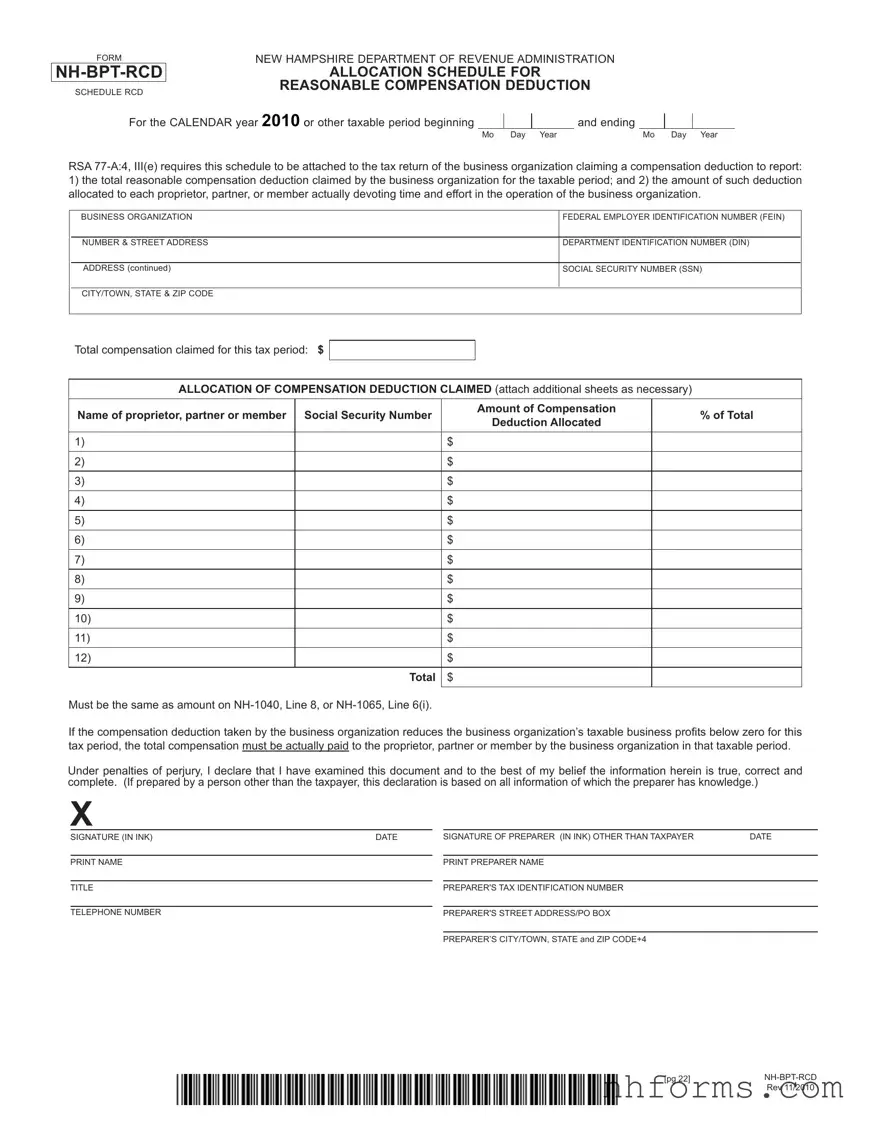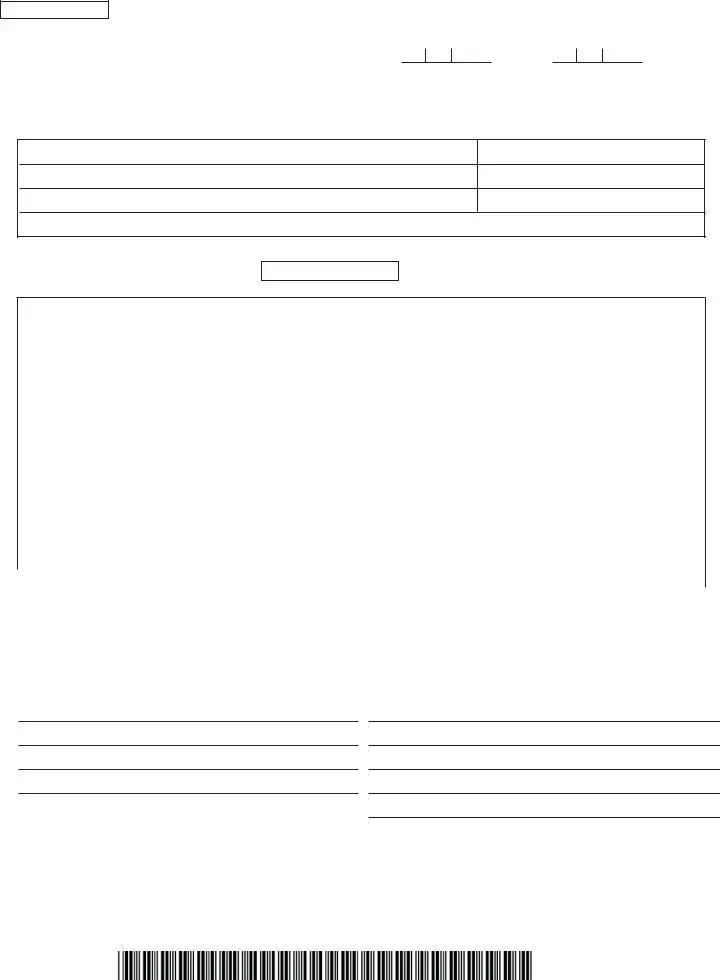What is the NH BPT RCD form?
The NH BPT RCD form, officially designated as Form NH-BPT-RCD, is a schedule required by the New Hampshire Department of Revenue Administration. It serves as an allocation schedule for the Reasonable Compensation Deduction. Businesses use this form to report the total reasonable compensation deduction claimed for a taxable period, along with the distribution of this deduction among proprietors, partners, or members actively involved in the business's operations.
Who needs to file the NH BPT RCD form?
This form must be filed by any business organization operating within New Hampshire that claims a reasonable compensation deduction on its tax return. This includes, but is not limited to, corporations, partnerships, and sole proprietorships whose proprietors, partners, or members are allocating compensation deductions among themselves.
What is the purpose of this form?
The primary purpose of the NH BPT RCD form is to ensure compliance with RSA 77-A:4, III(e), which mandates that a detailed allocation schedule of the reasonable compensation deduction be attached to a business's tax return. It facilitates the accurate and fair assessment of tax liabilities by detailing how the compensation deduction is distributed among those contributing time and effort to the business.
For what period is the NH BPT RCD form filed?
This form is filed for the calendar year 2010 or other taxable periods beginning and ending as specified by the filer on the form. The taxable period should align with the business's fiscal year if it does not operate on a calendar year basis.
What information is required on the NH BPT RCD form?
Filers are required to provide the business organization's federal employer identification number (FEIN), address, Department Identification Number (DIN), and the total compensation claimed for the tax period. Additionally, detailed allocation of the compensation deduction, including the name, social security number, and amount of compensation allocated to each proprietor, partner, or member, must be reported.
How is the compensation deduction allocated among proprietors, partners, or members?
The compensation deduction is allocated based on the percentage of the total deduction each individual is entitled to, which corresponds to their contribution of time and effort in the operation of the business. The specific allocations should reflect the fair value of each person's involvement.
What happens if the compensation deduction reduces the business’s taxable profits below zero?
If claiming the compensation deduction results in the business organization’s taxable business profits falling below zero for the tax period, the total compensation must actually be paid out to the proprietor, partner, or member within that same tax period. This requirement ensures that the deductions claimed correspond to real monetary disbursements.
What are the penalties for not properly completing the NH BPT RCD form?
Failure to properly complete and attach the NH BPT RCD form to the tax return can result in penalties. These penalties may include fines and interest on unpaid taxes, as the form is crucial for accurately calculating a business's tax obligations. Additionally, inaccuracies or omissions may lead to audits or further scrutiny from the New Hampshire Department of Revenue Administration.
How can a business file the NH BPT RCD form?
The form should be completed and attached to the relevant tax return (NH-1040 for sole proprietorships or NH-1065 for partnerships) and filed by the standard tax filing deadline. Specific instructions regarding filing electronically or by mail can be obtained directly from the New Hampshire Department of Revenue Administration's website or by contacting their office.
Where can additional guidance on the NH BPT RCD form be found?
For further assistance or clarification regarding the NH BPT RCD form, taxpayers are encouraged to consult the New Hampshire Department of Revenue Administration's official website. Here, detailed instructions, frequently asked questions, and contact information for direct support are available. Additionally, consulting with a tax professional familiar with New Hampshire tax law can provide personalized guidance.

